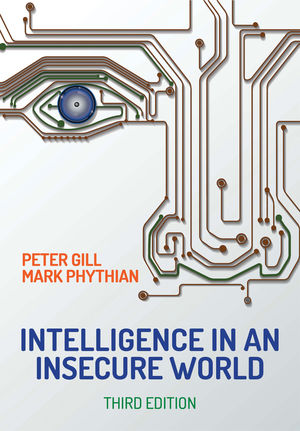The life safety industries have been fortunate over the last 20 years in that monitoring services associated with recurring monthly revenues (RMR) have been reliant on hardwired systems whose signals were transported to monitoring centers via the telephone landlines — stable and slowly evolving technologies that created a very sustainable and predictable customer environment. The 21st Century brought a technological revolution, as wireless capabilities became reliable and the Internet and Wi-Fi established new communication platform alternatives for security system monitoring.
As late as the 1990s, the installed life safety equipment and signal platform were very common to both seller and buyers in the market; thus, there was very little impact for these customer characteristics on the valuation of subscriber accounts. If your customers were on non-downloadable panels in the 1990s or you did not have control of your signal carrier line, there might be a deduction by the buyer based upon the realization that they would need to visit each customer to redirect the signal to their central station to gain the full economic benefits of consolidating newly acquired accounts.
As the carriers continue to push to eliminate their landline infrastructure, which will necessitate that a customer be upgraded to maintain service, they also are forging new cellular technologies. Even the early wireless platforms that are not yet 10 years old are beginning to be phased out by the evolution to expanded cellular platforms. The days of trading RMR rooted in wired platforms and associated equipment are over. Those companies that are not working to keep pace with this evolution are causing their valuations to diminish incrementally.
The seller who participated in the “panel of the month” program from different manufacturers often has realized a lower value given the inherent service challenges that any buyer will have in servicing those customers. However, even that issue did not influence valuations the way the older installed equipment platform will in today’s market when the signal capability is at risk.
In due diligence, the easiest and often the most reliable way to ascertain the “installed equipment” of a base is to review a typical service truck of the target company. Most top service technicians try to avoid having to return to a customer site because they do not have the right manufactured panel or version on the truck, so you find all of the installed panels in the base. Of increasing importance — and available in most industry-specific CRM systems — is the maintaining of each customers’ installed panel and version (if not a list of all of the installed equipment). As your company grows, maintaining reliable information about your customers increases the efficiency of servicing those customers and offers a better opportunity to enhance your level of services as those customers evolve with the company and changing equipment and signal technologies.
With the “forced march” focus of the landline carriers in full motion to eliminate that technology, it has become a very real valuation issue for buyers as they consider acquiring “older technology accounts.” It is not an issue anymore of simply visiting the customer to re-point the signal — something that used to be a two- to four-multiple deduction in valuations. The older technology RMR may take a new investment in equipment and labor to evolve to a sustainable platform. While this evolution may bring with it a new contract and a higher RMR, the buyer has to remarket that customer in the midst of new and larger entity competitive offers for interactive services, home automation, video and remote control capabilities. All of this “opportunity” for the buyer often decreases the value of the target base.
On the flip side, a target company that has met the technology challenge head on and has developed marketing programs focused on equipment upgrade programs, interactive offerings and wireless adaptations can experience a premium valuation in the market. If the culture and service offerings of the target company already have been redirected to maximize the continuity of the RMR in the normal course of business, then buyers will have far less to invest to protect and grow the acquired base.
We have seen “older technology” discounts range as high as five multiple; on the other side, we have seen premiums of up to 10 multiple, based upon size, offered for “current technology platforms” and the companies that focus on the evolution of their technology offerings. In addition, the newer technology targets usually have a higher average RMR level per customer because of the inclusion of interactive services and remote access/controls versus the traditional providers. The days of paying more, no matter what the size, for a long-established digital landline-dependent-technology customer base are behind us.
With the evolution and increased sophistication of contract monitoring, the old full-service premium valuation differential has dissipated also. It continues to be critical that each company has control of its leased 800 landline, cellular or Internet signal connection in a segregated, contiguous receiver environment at your contract central. You even can make an argument for setting all of your accounts into a receiver that you own and “park” in a contract center. Your ability to control the signal transmission path is critical to eliminate any valuation discount as a seller. n
Editor’s Note: Part 5 in “The Art of the Deal” series will focus on the service obligation that comes with a customer base and how to determine the level and economic impact of that obligation during due diligence and adjust your valuation accordingly. This is one customer dynamic that is extremely difficult to adjust in a short time frame after an acquisition without generating excessive attrition. Look for Part 5 in the May 2014 issue of SDM.
About the Author
John Brady is principal of TRG Associates Inc., Old Saybrook, Conn. (www.trgassociates.com). Since its inception in 1991, TRG has been successfully assisting a wide range of security and fire alarm companies, entrepreneurs, lenders and investors in due diligence and acquisition planning.
The Art of the Deal
With the security and fire industries still very fragmented and continuing to grow, the acquisition opportunities within the United States and Canadian markets continue to be very active. As importantly, the capital markets continue to be very supportive of both industries when they identify capable management teams to back.
The predictable cash flows associated with the recurring monthly revenue (RMR) in these industries are the “crown jewel” that drives impressive operating margins. Author John Brady, principal of TRG Associates Inc., Old Saybrook, Conn., has been privileged to perform a vast number of valuations and due diligence efforts on behalf of buyers and sellers over the past 20 years and identifies what he has found to be the important aspects in the “art of the deal” in this six-part article series.
While maintaining a disciplined approach to evaluating a seller’s business is critical, there is an art to buying a selected group of RMR customers. This article series explores the important aspects of that art:
1. What should go into any acquisition valuation of RMR and the company as a whole? What revenue has value?
2. How does the attrition history of the seller impact the level of due diligence and ultimate valuation?
3. In performing due diligence, cash is your key indicator as to the health of the target company and the associated RMR. How do you analyze that important asset?
4. How does the buyer assess the installed technologies and signal platforms of the seller’s customers and what effect do those have on valuation?
5. How does the buyer assess the service expectations (obligations) and economics of a customer base? You won’t change those expectations overnight so assess carefully.
6. The letter of intent: how to fashion the art of the deal in a “hot market” versus practicing prudent investment principals.





